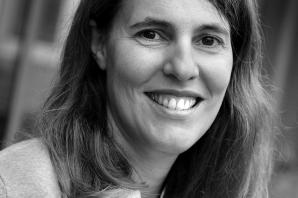The women of fundamental physics
This 8 March, the ERC celebrates the achievements of grantee Dr Mariana Graña, a determined researcher in a branch of physics where women are still noticeably underrepresented. She reflects on how far women have come in Theoretical Physics and what is still needed to overcome the gender-role stereotypes associated with this appealing but abstract field of science.

A tenacious start
A lack of women role models in textbooks and some teachers' gender biased perceptions of female students’ scientific abilities can sometimes influence a girl’s interest in science. This didn’t, however, hold back Mariana who has a curious mind and simply liked maths. She went on to pursue a degree in Theoretical Physics at the University of Buenos Aires.
Although the ratio of female to male students in this field in Argentina is equal at the undergraduate level, the number of female students drops to around 30% at the early career stage due to it being typically harder for female researchers to balance family life with the need to relocate for a fixed position. Sociocultural barriers like this cause the figure to fall again to roughly 20% at the professor stage, a figure which is only slightly higher than the approximate 15% of working women in the field of High Energy Theory in Europe.
Unravelling the secrets of the universe
Now a researcher at the French Alternative Energies and Atomic Energy Commission (CEA), Mariana recalls how she put family life on hold at the start of her own career in her quest to obtain a PhD in California and then post-doctoral positions in France before becoming established at the CEA. A barrier she firmly believes should be addressed to allow young female scientists the flexibility to pursue their scientific interests.

Mariana is grateful for the ERC’s parental leave measures which extend a female applicants' eligibility window to 18 months per child. Without these she would not have been able to persevere with her fundamental work on the force of gravity at the smallest scale - String Theory and how it can unify all the particles and forces of nature into one single model. And with the same strong-willed approach she has towards her career, controversy in this field does not dissuade Mariana from her maths.
ERC measures to improve gender balance
The ERC believes that women and men are equally able to engage in frontier research, a view which it supports by aiming to improve the gender balance among peer reviewers and among researchers submitting proposals in all fields as well as by identifying and removing any potential gender bias in the evaluation procedure. A Working Group on Gender Balance was set up by the Scientific Council to advance gender equality.
Networking for change
The full extent of gender biases in the field of Theoretical Physics was only made apparent to Mariana later on in her career when she became involved in a network of women working in string theory funded by an EU funded COST Action. Female scientists’ networks, such as these, help raise awareness of the biases affecting female researcher’s careers. It inspired Mariana to expand this network to the community of theoretical high energy physicists. The Gender in High Energy Theory (GenHET) network, hosted by the CERN Theory Department, just launched a new website with links to gender networks across Europe, the kind of networks Mariana actively encourages female scientists in her field to join. She also recommends more scientific mentorship schemes to support the career development of young scientists.
Gender-neutral policies
Some ‘gender-neutral’ policies that aim to treat female researchers equally can sometimes, in practice, be more of a hindrance. One such example is the placement of female researchers on recruitment and promotion committees, which given that the 30% panel balance is higher than the number of women in the field places an administrative burden on them - one they feel should be recognised.
Levelling the playing field
The promotion of gender equality in research and innovation is a commitment enshrined in Horizon 2020. Despite the progress, there remains much to be done to level the playing field in certain areas, such as High Energy Theory. The shared experiences of these women can help identify the different types of structural inequities faced be female researchers, empowering them to drive gender related changes to achieve their full potential in science. In the meantime, we commend steadfast researchers like Mariana who, in calling for change, can inspire young women to also follow what they enjoy in school.
Mariana Graña got her undergraduate degree in physics at the University of Buenos Aires and her PhD at the University of California, Santa Barbara in 2002. She then moved to France for post-doctoral positions at the Ecole Polytechnique and the Ecole Normale. In 2005 she joined the Theoretical Physics Institute at CEA/Saclay in a permanent research position. She got an ERC starting grant in 2011 and a consolidator grant in 2018.






